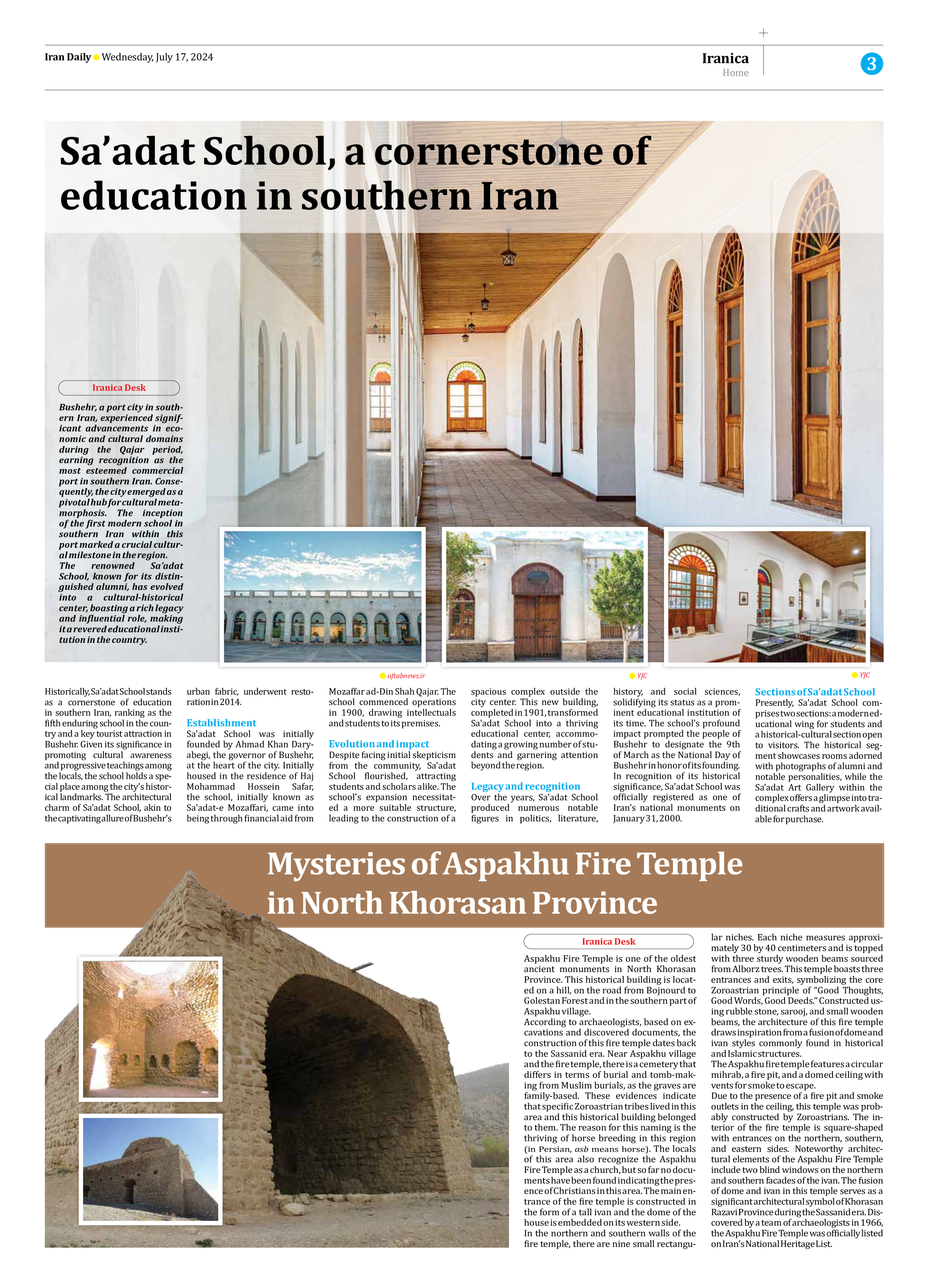
Mysteries of Aspakhu Fire Temple in North Khorasan Province
Aspakhu Fire Temple is one of the oldest ancient monuments in North Khorasan Province. This historical building is located on a hill, on the road from Bojnourd to Golestan Forest and in the southern part of Aspakhu village.
According to archaeologists, based on excavations and discovered documents, the construction of this fire temple dates back to the Sassanid era. Near Aspakhu village and the fire temple, there is a cemetery that differs in terms of burial and tomb-making from Muslim burials, as the graves are family-based. These evidences indicate that specific Zoroastrian tribes lived in this area and this historical building belonged to them. The reason for this naming is the thriving of horse breeding in this region (in Persian, asb means horse). The locals of this area also recognize the Aspakhu Fire Temple as a church, but so far no documents have been found indicating the presence of Christians in this area. The main entrance of the fire temple is constructed in the form of a tall ivan and the dome of the house is embedded on its western side.
In the northern and southern walls of the fire temple, there are nine small rectangular niches. Each niche measures approximately 30 by 40 centimeters and is topped with three sturdy wooden beams sourced from Alborz trees. This temple boasts three entrances and exits, symbolizing the core Zoroastrian principle of “Good Thoughts, Good Words, Good Deeds.” Constructed using rubble stone, sarooj, and small wooden beams, the architecture of this fire temple draws inspiration from a fusion of dome and ivan styles commonly found in historical and Islamic structures.
The Aspakhu fire temple features a circular mihrab, a fire pit, and a domed ceiling with vents for smoke to escape.
Due to the presence of a fire pit and smoke outlets in the ceiling, this temple was probably constructed by Zoroastrians. The interior of the fire temple is square-shaped with entrances on the northern, southern, and eastern sides. Noteworthy architectural elements of the Aspakhu Fire Temple include two blind windows on the northern and southern facades of the ivan. The fusion of dome and ivan in this temple serves as a significant architectural symbol of Khorasan Razavi Province during the Sassanid era. Discovered by a team of archaeologists in 1966, the Aspakhu Fire Temple was officially listed on Iran’s National Heritage List.







